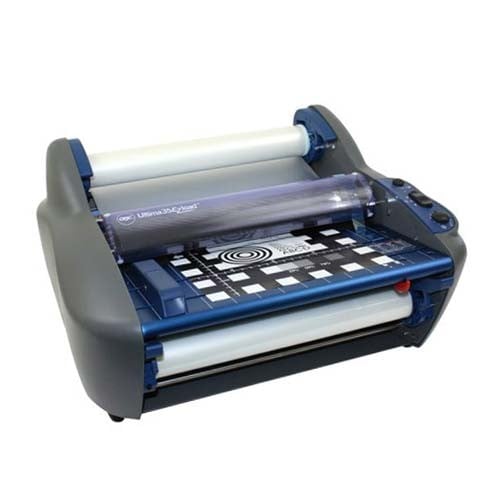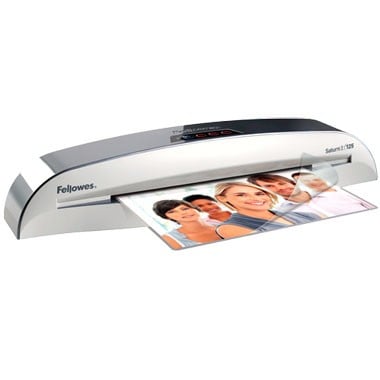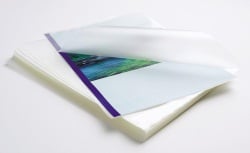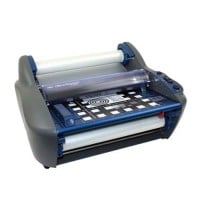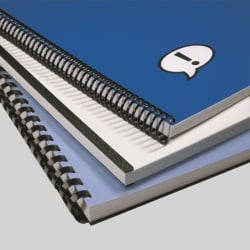MyBinding Knowledge Base
- Binding (248 Article)
- General Binding (42)
- Plastic Comb Binding (57)
- Fastback Binding (59)
- Perfect Binding (2)
- Modular Punching (8)
- Zipbind (3)
- Twin Loop Wire (13)
- Coil Binding (22)
- Thermal Binding (14)
- Strip Binding (1)
- VeloBind (4)
- Binding Covers (14)
- Proclick Binding (10)
- SureBind (4)
- Screw Post (2)
- Hole Punches (2)
- Staplers (4)
- Komtrak Insprial Binding (2)
- Paper (1)
- Rhin-O-Tuff (5)
- Binding Machines Comparison (17)
- Laminating (109 Article)
- General Laminating (26)
- Roll Lamination (16)
- Pouch Lamination (36)
- Pouch Board Laminator (3)
- School Laminator (3)
- Foil Laminating (3)
- Royal Sovereign Laminators (10)
- Laminators Comparison (3)
- Boards (11 Article)
- Bulletin Boards (3)
- Whiteboards (5)
- Chalkboards (1)
- Paper Shredders (44 Article)
- General Shredding (35)
- Industrial Shredders (1)
- Cross-Cut Shredders (2)
- Cardboard Shredders (1)
- Multimedia Shredders (1)
- Personal Shredders (1)
- High Security Shredders (1)
- Ring Binders (9 Article)
- Specialty Binders (2)
- Reinforced Paper (1)
- Health Care Punched Paper (1)
- Perforated Paper (2)
- View Binders (1)
- Index Tabs (9 Article)
- Index Tab Dividers (2)
- Copier Tabs (4)
- Pocket Folders (1)
- Custom Index Tabs (1)
- Pre-Printed Index Tabs (1)
- Paper Handling (37 Article)
- Paper Folders (9)
- Paper Joggers (2)
- Guillotine Cutters (4)
- Rotary Trimmer (3)
- Electronic Paper Cutters (1)
- Corner Rounders (2)
- Paper Scoring (2)
- Paper Drill (2)
- Booklet Makers (3)
- Stack Cutters (1)
- Paper Handling Equipment Comparison (5)
- ID Accessories (12 Article)
- Badge Holder (1)
- Lanyards (8)
- Badge Reels (1)
receive
$5off
*On order $25 or more.
How To Use a Roll Laminator?
If you laminate quite a bit of larger documents, such as posters and banners, chances are you need a roll laminator. Roll laminators are excellent for the rapid lamination of materials and range in size from 12 inches up to a few feet wide. Depending upon the size you choose, you can use a roll laminator to preserve artwork, posters, banners, maps, and more. Or you can simply process multiple smaller items at once. Whatever application you need, this video will walk you through how it works and how to operate a roll laminator. Still have questions? We'd love to hear from you in the comments below or feel free to contact us by phone or email.
Here is the audio transcript for this video:
Welcome to MyBinding's How To videos. This video will help you understand how a roll laminator works and how to use one. Harder and more complex than standard pouch laminators, roll laminators can be a bit intimidating. But understanding how one works takes the fear out of it. The controls are generally pretty simple on these laminators.
First, there's a power switch and there's also a selection between hot or cold lamination, if it's possible, and what size thickness of laminating materials. When you're actually ready to laminate, there's going to be a switch to start the rollers. The initial set up of a roll laminator can be a little tricky, so let's keep a couple of things in mind. When installing your laminating rolls, you have to make sure the adhesive side of the laminating roll is always faced away from the roller. You don't want to glue or the adhesive to actually touch the roller. It will heat it from the outside in, so to speak. The adhesive side always needs to be facing inward so that it grabs tight to your materials. You'll need to do an initial run with the laminating rollers. For this you can use cardboard or small, very thin board or very thick cardstock to push through. It gathers both sides of the laminate together. Let it run for a couple of feet so all bubbles, all wrinkles are straightened out and the two rolls are lined up together and working in unison. And you can simply trim this board and use it again the next time around. Guide fences are helpful, especially with larger projects that push right near the edge of the laminated material. When everything is set and ready to go, the advantage of a roll laminator is the speed. You can process multiple projects at once, one right after another, right after another, right after another, simply trimming at the end. And roll laminators are especially wide, so you can do things in landscape or portrait, as well as oversize and poster size documents. And there it is, that's how to use a roll laminator. Happy laminating! For more demos, reviews, and how tos, check out MyBinding.com.
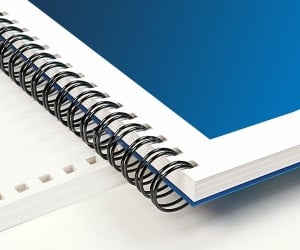
< Over the years, a number of customers have asked me whether they can use twin loop wire with their plastic comb binding machine. These customers often don’t want to have to buy a brand new machine but like the look and feel of twin loop wire binding. However, the answer to their question isn’t as simple as it seems. You see, they actually do make twin loop wire that is designed to work with the plastic comb binding hole pattern. With that said, if you want to use these wires you are going to need a way to close the wires. What is Spiral-O Wire? Let me explain a little bit more…There is a product that we carry called Spiral-O Wire. This wire has 19 loops and is designed to work with the hole pattern from a plastic comb binding machine. Spiral-O Wire is sometimes called Wire Combs or Ibico Wire and was originally designed for use with some of the older Ibico binding machines. A number of the older Ibico plastic comb binding machines also included a twin loop wire closer on the front of them to allow users to use both plastic combs and wire. This 19 loop wire was designed for this purpose. What Equipment is Needed? As the Ibico brand has been phased out by GBC and all of the older Ibico plastic binding machines have been replaced with new models, they no longer have the twin loop wire closer on the front of them. This presents a problem in trying to use these spiral-o wires since you can’t use the wires without a way to close them. One of the only options left is to purchase a Twin Loop wire closer. However, since twin loop wire closers are not incredibly cheap this option usually only appeals to users who have larger electric plastic comb binding machines. Otherwise, it is often advisable to simply buy a low end 3:1 pitch twin loop wire binding machine (the supplies are cheaper). This being said, if you have one of the older Ibico binding machines that has a wire closer included you are in luck. The Spiral-O binding supplies that we carry will work perfectly with your machine and you will be able to use both plastic combs and wire depending on your needs. These Spiral-O binding supplies are available in Black, Silver, White, Blue and Red and in sizes up to 1″ in diameter. If you aren’t sure what type of wire binding supplies that you need to work with your machine simply give us a call. Our trained sales representatives will be glad to help you find the correct supplies for use with your machine.(Read More)
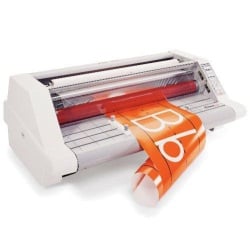

Loading...


